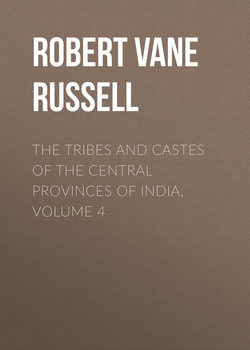Читать книгу The Tribes and Castes of the Central Provinces of India, Volume 4 - Robert Vane Russell - Страница 55
Part II
Articles on Castes and Tribes
Kumhār—Yemkala
Vol. IV
Kurmi
16. Treatment of mother and child
ОглавлениеThe great object of the treatment after birth is to prevent the mother and child from catching cold. They appear to confuse the symptoms of pneumonia and infantile lockjaw in a disease called sanpāt, to the prevention of which their efforts are directed. A sigri or stove is kept alight under the bed, and in this the seeds of ajwāin or coriander are burnt. The mother eats the seeds, and the child is waved over the stove in the smoke of the burning ajwāin. Raw asafoetida is put in the woman’s ears wrapped in cotton-wool, and she eats a little half-cooked. A freshly-dried piece of cowdung is also picked up from the ground and half-burnt and put in water, and some of this water is given to her to drink, the process being repeated every day for a month. Other details of the treatment of the mother and child after birth are given in the articles on Mehtar and Kunbi. For the first five days after birth the child is given a little honey and calf’s urine mixed. If the child coughs it is given bans-lochan, which is said to be some kind of silicate found in bamboos. The mother does not suckle the child for three days, and for that period she is not washed and nobody goes near her, at least in Mandla. On the third day after the birth of a girl, or the fourth after that of a boy, the mother is washed and the child is then suckled by her for the first time, at an auspicious moment pointed out by the astrologer. Generally speaking the whole treatment of child-birth is directed towards the avoidance of various imaginary magical dangers, while the real sanitary precautions and other assistance which should be given to the mother are not only totally neglected, but the treatment employed greatly aggravates the ordinary risks which a woman has to take, especially in the middle and higher castes.
